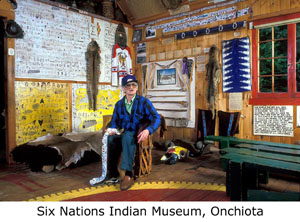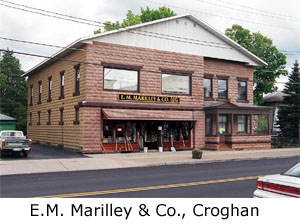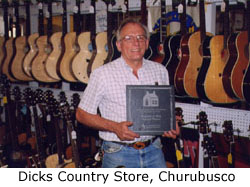Frequently Asked Questions
Q: What is the mission of TAUNY’s Register of Very Special Places?
A: Our mission is to record and preserve important details about the architecture, social and cultural history, and current vitality of North Country cultural landmarks while first-hand information is still available.

Q: What is a cultural landmark?
A: We all know about Mount Rushmore or the Vietnam Veterans Memorial Wall. These are truly distinctive landmarks with meaning for all Americans. How about Plymouth Rock, Ford’s Theater, or Graceland? What all of these sites have in common is their personal value as cultural landmarks--places full of memories and traditions that have become part of the American story. Our own communities have such landmarks, too. The stories of these sites may not be recognized by or as important to outsiders, but they are very much part of each community’s landscape and heritage. While our local landmarks are likely to be vernacular architecture and not grand structures, they are full of meaning and value to our daily lives. As scholar Kent Ryden puts it: "The meaning of a place for the people who live there is expressed by the stories that they tell about it, about the elements that comprise it, and about the events that took place within its bounds."
Q: What is vernacular architecture?
A: Vernacular architecture includes structures that were built by ordinary people who have not been educated in any kind of formal architectural design. Often they are constructed of local materials by local craftsmen. The craftsmen design and create these structures based on personal experience and the needs and tastes of their clients, or their own private needs. In the North Country, some traditional forms of vernacular architecture include maple sugar houses, potato barns, or Adirondack lean-to’s. Others can be local adaptations of formal or published styles, often of urban origins; they include diners, one-room schoolhouses, drive-in theaters, country churches, town halls, summer camps, footbridges, and lots more.
Q: What do you mean by a “register” of special places?
A: Our Register is an inventory or census of the various landmarks in the communities of the North Country. They are nominated and documented by people who live and participate in their communities. However, the Register will be much more than a list. It will contain important factual and anecdotal information about each site. This information will be recorded and preserved for the future. The Register’s information will be held in a central place–the TAUNY Archives in Canton–where students, scholars, journalists and other interested citizens can visit–personally or on the web--to do research. The information found on the website is limited and more extensive files about the Register’s sites can be found in the physical archives at TAUNY.
Q: Who is TAUNY and what do you do?
A:Traditional Arts in Upstate New York is a non-profit organization dedicated to helping people understand and appreciate the folk traditions and local culture of everyday life–present and past--in northern New York. To do so, TAUNY seeks to research and preserve a record of diverse groups, customs and traditions; to recognize and empower traditional arts and artists; to identify and promote regional identity; and to provide opportunities for people of all ages to learn about folklore and local culture. Please see our organization website for much more information.
Q: Does TAUNY’s Register include only buildings?
A: No. While we anticipate documenting more buildings or complexes of buildings, we also recognize and encourage the nomination of non-traditional sites. Some possibilities include footbridges, fire towers, public sculptures and natural phenomena such as roadside boulders, scenic overlooks, swimming holes, and more. The most important part is the landmark’s value within the community and the stories that can be recorded which support this claim.
Q: What area will the Register include?
A: At the beginning, TAUNY will concentrate our efforts in the six northernmost counties of the North Country--Clinton, Essex, Franklin, Jefferson, Lewis, and St. Lawrence. As staffing and other resources allow, we may expand the program into other counties in the region.

Q: What are the criteria for eligibility for RVSP?
A: Listed here are the ten criteria for selection for RVSP. While we don’t believe sites have to meet all of them to qualify, the more that can be supported with good evidence by community members, the better.
- a place for community gatherings
- a place that meets a community’s social, spiritual, economic or entertainment needs
- a place where vital community events still take place
- a place that has served multiple generations over time
- a place where an important local historical event or movement occurred and is remembered
- a place that’s a source or repository of local beliefs, customs or stories
- a place that’s a physical marker on the local landscape
- a place that’s a good example of a vernacular architectural form
- a place that’s a factor in community or regional identity
- a place that’s an example of the vanishing regional or American landscape
Q: Is there an age requirement for sites on RVSP?
A: Unlike the National Register of Historic Places which usually requires a minimum of 50 years [and most are considerably older], RVSP does not have a specific age requirement. We do, however, expect that a site will have survived the test of significance to "multiple generations over time." Priority will be given to places that are still active and vital components of our communities.
Q: How do we nominate our site?
A: Nomination of a site to RVSP is really quite simple. You only need to answer a few basic questions about the site and why it’s important to your community. This information can be found and entered into the nomination form on this website. You may either enter the information right on your computer screen or print it out and fill it in by hand. The completed form can be emailed, mailed or faxed to TAUNY. The main purpose of the nomination stage is for TAUNY to learn about the existence of cultural landmarks in our region–don’t assume we already know!–and to realize that community members are aware and care enough to bring them to our attention.
Q: What do you mean by “documentation” and why is that important?
A: To us at TAUNY, documentation means creating a record of available information about people, places, things and events that constitute important parts of local life and culture in the North Country. Since much of what we study has not been written about significantly, our usual means of collecting information is interviewing people for their knowledge of facts, anecdotes and observations and, whenever possible, recording them on tape or digitally for a record in their own voices and words. We also create a visual record–with contemporary and historic photos, video, drawings, etc.–to illustrate the site and its uses over time. This process is important to RVSP’s mission, since it collects together–often for the first time–both facts and the memories and observations of people who know the site first hand and can relate them in their own voices and words for later generations to hear.
Q: How do we document our site?
A: Following our guidelines –which you can download and print out–you will complete a number of steps right in your own community:
- Take some basic measurements of the site and the structure[s];
- Draw a simple floor plan that shows the uses of the various parts of the building and a simple layout of the whole site;
- Take a few photographs of the exterior and interior of the structure[s];
- Identify a few local residents who can relate information and stories about the history and uses of the site; then interview and, ideally, record them.
Q: Who can do the documentation?
A: We have made real efforts to make the process of documentation as user friendly as possible. In another section of this website, we have provided a series of Tips on Documentation, including conducting interviews, recording interviews, taking architectural photographs, measuring architectural sites and finding local documents. These can be downloaded and printed out. Local residents are far more knowledgeable about the site than outsiders, even professionals. We are confident that people like you in your community can do the documentation well. We encourage you to find one or two community members to lead the process and to find others, when it’s helpful, to work on it as well. For example, if someone in the group is a good photographer, ask her or him to do that part; if someone can measure and draw the floor or site plans and someone else has come experience with audio or video recording, they could help with those steps. That eases the burden on one or two people and gets more community members invested in the project.
Q: Is help for documentation available if we need it?
A: If you need assistance, please call on us. The RVSP Coordinator or some other staff person is more than willing to help in explaining our guidelines, going over our tips on documentation, or visiting your site and your group to clarify questions or demonstrate some documentation techniques.

Q: How long does it take to be accepted for Register designation?
A: Ordinarily, not very long. Your nomination will be reviewed quickly and you will be advised if your site seems to qualify for Register status. If so, we will encourage you to go through the documentation process. Once you submit the package of materials, we will submit it to our knowledgeable RVSP volunteer advisory committee which meets quarterly. If sites are recommended, they are submitted to the TAUNY board of directors for approval.
Q: What is the difference between RVSP and state and national register designations?
A: Listing on the National Register of Historic Places recognizes a historic place for its importance to the community, state or nation. Under federal law, owners of private properties listed on the National Register are free to maintain, manage, or dispose of their property as they choose provided there is no federal involvement. Owners have no obligation to open their properties to the public, to restore them or even to maintain them, if they choose not to do so. Many people aspire to having their properties listed on the Register because it is both an honor and, in some instances, it offers a tax benefit to owners. The emphasis in the nomination process for the National Register is on the quality and integrity of the architecture of structures. TAUNY’s Register is meant to be a local honor, places no restrictions on owners and offers no tax benefits. The information gathered, however, is strong evidence for advocating that the site is of vital community importance and should be preserved and used. This may be especially effective in efforts by developers or local governments to use the powers of eminent domain to gain control over the property. If the property otherwise qualifies for RVSP, we recommend that people pursue our process first. Much of the factual information about the building[s] could be useful for a National Register nomination later.

Q: Getting our site on the Register of Very Special Places seems like quite a bit of work. What’s in it for us?
A: We at TAUNY believe there are several important benefits to a community when a site is selected for the Register of Very Special Places:
- A profile, with pictures and important information about your site will be added to TAUNY’s Gallery of Very Special Places on our website
- Copies of the complete information gathered when you document your site will be added to library and historian’s collections in your community, as well as to TAUNY’s archives, for student and general use, now and in the future
- Your site will be presented with an attractive, locally crafted slate marker, identifying it as a Very Special Place in the North Country
- Your documentation could be helpful in efforts to nominate your site to the National Register of Historic Places and in finding resources to help save the site for future generations
- If it’s desirable to you, your site could become a destination for visitors to your community and the region. The tourism industry is promoting such sites that are open to the public as a way to better understand and appreciate the sense of place that local residents share.
- Your community will have the satisfaction of actively participating in preserving your local landmark and conserving your local way of life
Q: How and where will all the information we develop be kept?
A: Complete sets of the information gathered will be deposited in at least two places: a local library, historical society or historian’s office in the community and in the central TAUNY Archives in Canton. We will maintain our archives and make the information available to the public and encourage others to do the same.
Q: Who will have access to our information?
A: The information we put on our website will, of course, be available to anyone. What we include in the more complete files in the TAUNY Archives will be available under our supervision to students, scholars, journalists and other interested citizens. Releases will be signed by the donors of information to the Archives when given to TAUNY, with the understanding that information will be used for educational purposes only. The Executive Director of TAUNY has the right to give permission for other uses, with appropriate notification to the donor or his or her heirs. A donor may request that some materials be restricted from public use, but we do not encourage that.